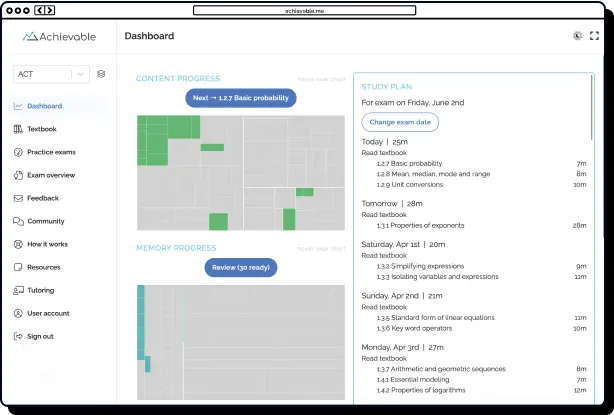
Applying to medical school during a gap year: Demonstrating progress and intent




Table of contents
- Document and reflect on your gap year for maximum application impact
- Transform your gap year experiences into compelling application stories through strategic documentation
- Get more from your gap year: Use structured reflection to stand out
- Emphasize achievements that address previous gaps
- Provide concrete evidence: Supervisor feedback and documentation amplify your achievements
This article is part 7 of 8 of our series on making the most of your medical school gap year, where we provide you with insights on studying for the MCAT, using your time effectively, and translating your experiences into compelling narratives. In part 7, we offer tips on tricks for deciding what to do during a gap year, compiling evidence of your achievements, and making your application shine by staying organized.

Document and reflect on your gap year for maximum application impact
Transform your gap year experiences into compelling application stories through strategic documentation
As a pre-medical student preparing for the medical school application process, your gap year is a unique opportunity to build and showcase qualities that admissions committees seek. To make your experiences truly count, you need to document them purposefully and thoughtfully from the start.
Successful applicants consistently record their journey with intention. As recommended by Savvy PreMed, keep a notebook or a note-taking app handy during clinical, research, or volunteer activities. Right after each experience, jot down specific, memorable moments - like assisting a patient through a difficult procedure, navigating a challenging case, or learning from a mentor's feedback. These detailed anecdotes will serve as the foundation for authentic stories in your personal statement, interview answers, and update letters (Savvy PreMed's guide to gap year travel and documentation).
Remember, admissions officers value depth and reflection over a long list of loosely related activities. The AAMC cautions against filling your application with many short-term or unrelated experiences, as this may signal superficial engagement (AAMC resource on maximizing your gap year). By maintaining organized and detailed records, you can demonstrate real growth and commitment to medicine.
Think of your journal as the backbone of your application narrative. Petros Minasi, Senior Director of Pre-Health Programs at Kaplan, emphasizes that competitive applicants weave their gap year experiences into a story that highlights motivation and personal development. Capture both what you did and how it changed your perspective or skill set.
To maximize your documentation:
- Track hours, dates, locations, and your role for each significant experience.
- Set aside time weekly to reflect on lessons learned, new skills, and shifts in perspective.
- Be honest about both challenges and successes to show resilience and authenticity.
- Record detailed scenarios from clinical work and shadowing, including your personal insights beyond just listing tasks.
When it's time to complete the "Work and Activities" section, your notes will help you articulate what you learned and why it matters (GradSchoolHub's advice on reflecting during your gap year for medical school applications).
Intentional documentation helps you develop genuine stories that convey your growth and commitment, preparing you to answer interview questions with clarity and insight.
Get more from your gap year: Use structured reflection to stand out
You want your gap year to distinguish your application, not just fill time. Using proven frameworks like the STAR method, Situation, Task, Action, Result, can help you organize your reflections and present them in a way that resonates with admissions committees.
Here's how to apply STAR to your gap year experiences:
- Situation: Describe the context (e.g., volunteering at a community clinic serving uninsured, Spanish-speaking patients).
- Task: Clarify your role (e.g., translating medical information, assisting with patient intake).
- Action: Explain what you did (e.g., enrolled in medical Spanish, built rapport with patients).
- Result: Share the impact (e.g., improved patient understanding, developed cultural competence).
This approach allows you to highlight meaningful skills such as adaptability, resilience, and empathy - key qualities medical schools seek. Whether your gap year included clinical work, research, employment, or volunteering, STAR ensures your reflections communicate growth and purpose.
Research from the University of Central Florida College of Medicine supports that structured reflection during the gap year accelerates professional development and patient-centered attitudes, both of which are highly valued by admissions.
Focus especially on the "Result" - how your experiences shaped your approach to medicine. Did you become more adept at patient communication or handling setbacks? These personal transformations can set your application apart.
For more examples and tips, review these STAR method strategies for medical school interview questions to maximize the value of your gap year.

Emphasize achievements that address previous gaps
Admissions committees expect to see progress during your gap year, not just a list of new activities. According to Elite Medical Prep's analysis of medical school gap years, demonstrating improvement in areas like academics, clinical experience, or research is key.
To make your gap year achievements stand out:
- Directly address weaknesses: For example, "Raised MCAT from 502 to 514 after 120+ hours of AAMC practice and weekly tutoring" is more impactful than simply noting a retake.
- Be specific about clinical and volunteer experience: "Completed 200 hours of shadowing in family, emergency, and internal medicine, including 50 hours at a federally qualified health center."
- Connect achievements to future success: Shemmassian Consulting's medical school secondary essay tips suggest linking growth to future performance, such as "Raised GPA from 3.2 to 3.7 in upper-level biochemistry and completed 100 hours of service at a free clinic."
- Reflect on personal growth: Medical School HQ's guidance encourages you to explain how overcoming challenges, like retaking tough courses, developed your resilience or empathy.
"Successful applicants don't just state they improved their MCAT score - they explain how the disciplined study habits developed during their gap year prepared them for medical school's academic demands." - Medical School HQ gap year guidance
Showcasing clear, documented improvements that address prior weaknesses will help your application tell a story of readiness for medical school.
Provide concrete evidence: Supervisor feedback and documentation amplify your achievements
As more applicants take gap years (gap year applicant statistics), admissions committees expect strong, verifiable evidence of your contributions.
To strengthen your application:
- Collect official documentation: Gather certificates, abstracts, publications, or award letters - these serve as proof of your achievements, similar to the verification process in residency applications (PubMed Central article on verifying research publications).
- Request supervisor or mentor feedback: Ask for detailed letters or evaluations that outline your responsibilities and impact. Third-party feedback bolsters the credibility of your application (UMHS advice on gap year documentation).
- Emphasize long-term, meaningful roles: Highlight sustained involvement with supervisor testimonials, rather than listing many short-term activities (AAMC's guidance on gap year activities).
- Document research contributions: Ensure your name appears on abstracts, posters, or publications, and list these accurately on your application (Student Doctor Network discussion on gap year publications).
- Share supervisor comments: Incorporate specific feedback that illustrates your growth and impact (Brown University Health Careers Advising recommendations).
With concrete documentation and meaningful supervisor feedback, you can provide admissions committees with compelling, verifiable evidence of your readiness for medical school.
Click here for the closing entry in our series, "Align with admissions committees' views on gap years." Read on for the advice you need on showing purpose and growth throughout the med school admissions process.

